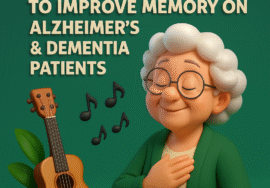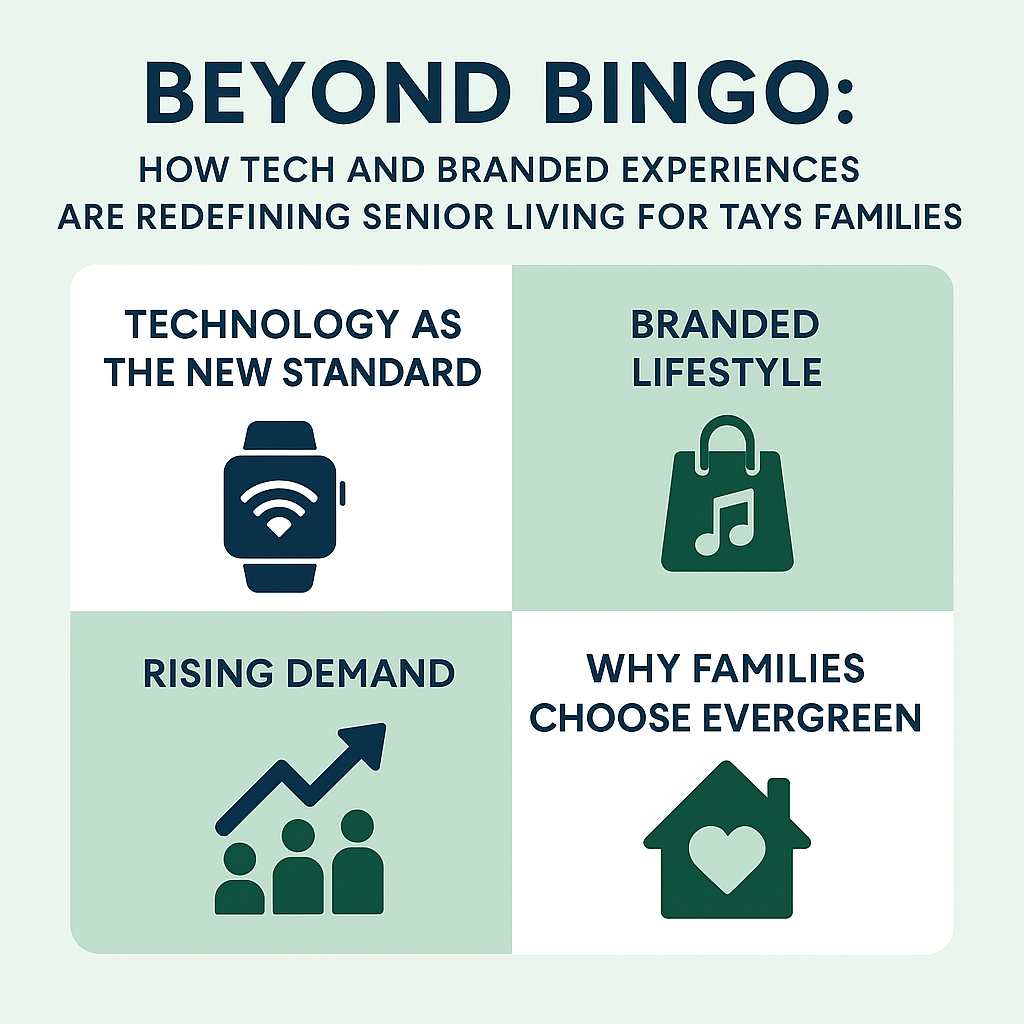
The Time is Now; Why This is the Best Time to Invest in Assisted Living
You’ve felt the subtle shifts, perhaps in your own family. The phone call from your mom where she mentioned another fall. The quiet concern in your dad’s voice when he talks about maintaining the family home. For adult children across the country, the reality of an aging population isn’t a distant statistic; it’s a personal, pressing matter. This demographic wave, combined with profound economic forces, is creating a pivotal moment for a specific sector: assisted living.
This isn’t just about business or investment in the traditional sense. It’s about understanding a fundamental change in our society’s needs. The convergence of the rising costs of homeownership and the incoming surge of older adults isn’t a future prediction; it’s happening today. For families navigating care for their parents, and for those looking to understand the landscape of senior living, recognizing this convergence is crucial. It explains why the choices we make now—about care, about housing, about planning—are more critical than ever.
This article will explore the powerful economic and demographic currents making this the optimal time to consider the assisted living model. We will dissect the challenges families face, the evolving solutions the industry provides, and the tangible benefits that modern assisted living offers beyond mere convenience.
Table of Contents
- The Silver Tsunami: Understanding the Unprecedented Demographic Shift
- The Squeeze of Homeownership: How Rising Housing Costs Are Forcing a Reckoning
- Beyond Bingo: The Modern Assisted Living as a Solution, Not a Compromise
- A Financial Lifeline: Unpacking the True Cost Comparison of Aging in Place vs. Community Living
- Making the Decision: A Compassionate and Practical Guide for Families
- Frequently Asked Questions (FAQ) About Assisted Living
The Silver Tsunami: Understanding the Unprecedented Demographic Shift
We are standing at the edge of a demographic transformation unlike any we have seen before. The term “Silver Tsunami” is more than a catchy phrase; it’s a precise description of the massive wave of aging individuals moving through our population. This shift is driven by the Baby Boomer generation, the 73 million people born between 1946 and 1964, who have shaped every life stage they’ve entered. They are now entering their senior years.
The numbers are staggering. Every single day, approximately 12,000 Americans turn 65. This trend is not slowing down; it’s accelerating and will continue for the next decade. By 2030, all Baby Boomers will be over 65, and one in every five U.S. residents will be of retirement age. This isn’t a temporary blip. It is a permanent reshaping of our national demographic profile with immediate and long-lasting implications for healthcare, housing, and family dynamics.
For you, the adult child, this demographic reality translates into a very personal challenge. The traditional support systems are straining under this new weight. There are simply more older adults needing care and fewer younger people to provide it. This is compounded by geographic dispersion of families; it’s common for children to live hundreds or thousands of miles away from their aging parents. The “village” that once helped care for its elders is often scattered, leaving one or two siblings to shoulder the immense physical, emotional, and financial burden of care from a distance.
Furthermore, increased longevity means that the period of time during which care is needed is extending. Your parents may require support not for just a few years, but for a decade or two. This long-term need places incredible stress on family caregivers, often referred to as the “sandwich generation,” who are caught between raising their own children and caring for their parents. The emotional toll of this responsibility—the constant worry, the guilt, the exhaustion—is a heavy weight to carry.
This demographic inevitability creates a powerful, non-negotiable demand for high-quality senior living options. The existing supply of assisted living communities is not prepared to meet the volume of need that is already here and growing. This supply and demand imbalance is a core reason why the sector is poised for significance. It’s not about creating a need; it’s about responding to a profound, pre-existing one that is visible in census data and felt in living rooms across the country. Understanding this macro-level shift is the first step in recognizing why the timing for exploring assisted living is so critical, both for the well-being of your family and for the broader market.
As we grasp the sheer scale of this population shift, we must also look at the parallel economic story unfolding, one that is making the traditional model of “aging in place” increasingly difficult and financially untenable for many families.
The Squeeze of Homeownership: How Rising Housing Costs Are Forcing a Reckoning
For generations, the family home has been more than just a building; it has been a symbol of stability, a repository of memories, and the assumed setting for a person’s golden years. The phrase “aging in place” evokes a comforting ideal. However, the economic realities of maintaining that ideal have shifted dramatically, creating a financial and logistical pressure point for seniors and their families that can no longer be ignored.
The core of the issue lies in the rising costs associated with homeownership. While the value of a home may have appreciated, the cash required to maintain it has skyrocketed. Property taxes continue to climb in many areas, homeowners insurance premiums are increasing, and the cost of essential utilities like electricity, heating, and water shows no sign of decreasing. For a retiree on a fixed income, these are not variable expenses; they are relentless financial obligations that chip away at their financial security each month.
Beyond these baseline costs, the true financial threat often lies in the unexpected. The 30-year-old roof doesn’t leak until it does. The HVAC system works perfectly until it fails on the coldest night of the year. A major plumbing issue or foundation repair can easily result in a bill of $10,000, $15,000, or more—a devastating sum for those without substantial liquid savings. These are not mere possibilities; they are inevitabilities for any aging structure. The family home, once a source of equity and pride, can quickly become a draining financial liability.
Compounding this is the physical burden of maintenance. The demands of yard work, cleaning gutters, shoveling snow, and handling routine repairs become increasingly difficult and dangerous with age. What was once a simple Saturday chore can become a high-risk activity leading to falls and serious injury. Many adult children find themselves in the impossible position of becoming long-distance handymen or hiring costly services to manage their parents’ property, adding another layer of expense and constant worry.
This squeeze is further tightened by the current economic climate of inflation. The cost of groceries, prescription medications, and gasoline has risen sharply, leaving less disposable income for home maintenance and repairs. A budget that was comfortable five years ago may now be stretched to its breaking point. The dream of aging in place is colliding with the hard math of inflation, making it an unsustainable financial model for a growing number of seniors.
When you add it all up—the property taxes, insurance, utilities, unpredictable major repairs, and the cost of outsourcing physical labor—the true annual cost of maintaining a single-family home is often far higher than most families initially calculate. This comprehensive financial picture is essential to understand because it forms a direct and compelling contrast to the predictable, all-inclusive monthly fee of a modern assisted living community. The financial strain of the old model is creating a powerful impetus for change, pushing families to seek solutions that offer not just care, but also financial predictability and relief from the burdens of a house that has become too much to handle.
This financial and logistical pressure, combined with the demographic wave, sets the stage for a modern solution that has evolved far beyond the clinical institutions of the past. The next step is to understand what today’s assisted living community truly offers.
The Modern Assisted Living as a Solution, Not a Compromise
When many adult children hear the words “assisted living,” they often picture a dated, institutional setting—a place of loss and limitation. This outdated image is perhaps the single greatest barrier to having a clear-eyed, productive conversation with aging parents. The reality of modern senior living could not be more different. Today’s communities are not about what residents give up, but about what they gain: a vibrant, engaging, and secure lifestyle designed to promote well-being in every dimension.
The modern model is built on the core principle of resident-centered care. This means the support adapts to the individual, not the other way around. Care plans are meticulously personalized, whether a parent needs a gentle reminder to take medication, steadying assistance on the walk to dinner, or help with bathing and dressing. This 24/7 access to discreet, professional support does not strip away independence; it protects it. It allows your mom to feel confident walking to the library without fear of a fall. It enables your dad to manage his diabetes with the correct medication dosage at the right time. This safety net is the foundation upon which a truly fulfilling life is built, freeing residents from the anxiety and isolation that so often accompanies aging alone in a family home.
But the care is only one part of the story. The social and emotional benefits are where the modern community truly shines. Loneliness and social isolation are silent epidemics among seniors, with proven detrimental effects on both mental and physical health that can rival smoking. A family home, especially after the loss of a spouse or the inability to drive, can become a beautiful prison. In a well-designed community, life is woven with opportunities for connection. This goes far beyond the stereotype of bingo. Imagine your parent joining a morning yoga class, attending a guest lecture on local history, tending a raised garden bed with a neighbor, or simply sharing stories over a chef-prepared meal in a restaurant-style dining room.
The physical environment itself is engineered for engagement and ease. Apartments are designed to be maintenance-free, with housekeeping, linen service, and all repairs handled by staff. There are no more worries about a leaky faucet or a dusty hallway. The campus is built with secure, walkable paths, beautiful courtyards, and common areas that naturally encourage interaction. This “built-in neighborhood” eliminates the logistical hurdles that cause seniors to withdraw—no need to drive, no need to cook a complex meal for one, no need to maintain a property.
For you, the adult child, this transformation is profound. The role of a caregiver is one of love, but it is also exhausting and can strain even the strongest parent-child relationship. Transitioning this daily, task-oriented care to a team of compassionate professionals allows your relationship to reset. You can return to being a daughter or a son—sharing laughs, listening to stories, and enjoying quality time, rather than being the constant manager of medications, meals, and medical appointments. The peace of mind that comes from knowing your parent is safe, socially engaged, and professionally cared for is immeasurable. It is not a compromise; it is an upgrade to their quality of life and yours.
Understanding this evolved model is critical, but it naturally leads to the most pressing and practical question for families: how do the numbers actually work? To make an informed decision, we must move beyond assumptions and conduct a clear-eyed comparison of the true financial picture.
A Financial Lifeline: Unpacking the True Cost Comparison of Aging in Place vs. Community Living
The conversation about assisted living inevitably arrives at a single, daunting question: “How much does assisted living cost?” It is often the first and loudest concern, and the quoted monthly fee can cause sticker shock. However, this initial reaction is usually based on an incomplete financial picture. To make a truly informed decision, you must shift your perspective from viewing it as a new, singular expense to understanding it as a consolidation and reallocation of existing—and often hidden—costs.
Let’s begin by breaking down the true, total cost of aging in place. Most families calculate the mortgage or property taxes, but they fail to account for the full spectrum of expenses. Start with the fixed costs: property taxes, homeowners insurance, and HOA fees if applicable. Then, add in the utilities: electricity, gas, water, sewer, trash, and essential services like internet and a robust emergency alert system. Now, factor in ongoing maintenance: lawn care, snow removal, gutter cleaning, and routine servicing for major systems like HVAC. These alone can amount to hundreds of dollars each month.
Then, you must prepare for the unpredictable. The family home is a aging asset, just like its occupants. A new roof can cost $15,000. A failed furnace, $5,000. A major plumbing repair, thousands more. Financially, this means you must maintain a significant cash reserve for home emergencies, money that is locked away and not generating income or being used for enjoyable experiences.
Now, layer in the costs of care and support. This is where the expenses can skyrocket. If your parent needs help with activities of daily living, the cost of in-home care is substantial. According to recent data, the national median hourly rate for a home health aide is over $25. If you need just four hours of help per day, that’s over $3,000 a month. Need 8-hour coverage? That figure doubles. 24/7 live-in care can easily exceed $15,000 per month. Add to this the cost of groceries, medication management, and transportation if your parent can no longer drive, which may involve using ride-sharing services or purchasing a new, safer vehicle.
When you add all these line items—mortgage/rent, taxes, insurance, utilities, maintenance, in-home care, groceries, and transportation—the total is often startlingly close to, and frequently exceeds, the monthly fee of an assisted living community.
This is the crucial reframing: the assisted living fee is largely all-inclusive. It typically covers:
- A private, maintenance-free apartment
- All utilities (except possibly a private phone line)
- Housekeeping and linen services
- Three nutritious meals per day plus snacks
- All building maintenance, repairs, and groundskeeping
- 24-hour security and staff availability
- Scheduled transportation
- A full calendar of social, recreational, and wellness activities
- And most importantly, the personalized care and support your parent needs.
This model transforms unpredictable, scattered expenses into a single, predictable monthly payment. It eliminates the burden of managing multiple bills and service providers. It protects your parent’s savings from being depleted by a single home repair crisis. For adult children acting as financial caregivers, this predictability is a lifeline, simplifying budgeting and financial planning immensely. It is not merely an expense; it is a strategic financial decision that provides clarity, security, and comprehensive value, allowing your parent’s resources to be dedicated directly to their health, happiness, and well-being.
With a clear understanding of the financial landscape, the path forward becomes less about cost and more about care and quality of life. The final step is navigating the emotional and practical journey of selecting the right community, a process that requires both a checklist and a compassionate heart.
Making the Decision: A Compassionate and Practical Guide for Families
Understanding the demographic, financial, and lifestyle benefits of assisted living is one thing. Translating that knowledge into action and beginning the search for the right community is another. This final step is often the most emotionally charged, filled with delicate conversations and difficult decisions. It is a journey that requires equal parts practical diligence and deep empathy, both for your parent and for yourself.
The process begins long before you tour a single community. It starts with a conversation. Approach this talk not as a directive, but as a collaborative exploration of the future. Choose a calm, private moment and use “I” statements to express your care and concern. You might say, “I’ve been worried about you being alone in the house all day,” or “I was thinking about your safety on the stairs, and it made me wonder what options we could look at together.” Frame the discussion around shared goals: safety, social connection, and relieving the burden of home maintenance. Listen more than you speak. Acknowledge the fear and sadness that accompanies the idea of leaving a long-time home; these feelings are valid and real. This is not a single conversation, but a series of them, building understanding and trust over time.
When you are ready to look at communities, your preparation should be both logistical and intuitive. Create a list of questions that go beyond the basics. Yes, you need to know “how much does assisted living cost,” but also ask about the staff: “What is your staff-to-resident ratio during the day and overnight?” “How long has your Executive Director been here?” Low turnover is a powerful indicator of a positive culture. Inquire about the process for increasing care levels: “How do you assess when a resident needs more help, and how are families involved in that conversation?”
During the tour, pay attention to your senses. Does the community feel warm and vibrant, or quiet and sterile? Look at the residents’ faces. Do they seem engaged and content? Observe how staff interact with residents; is it respectful and familiar, or purely transactional? Eat a meal there. The quality of food and the social atmosphere of the dining room are cornerstones of daily life. This is where you move beyond the marketing brochure and gauge the true quality of life.
Trust your instincts. The most beautiful community with the most impressive amenities is the wrong choice if it doesn’t feel like a place your parent would be happy. You are not just selecting a service provider; you are choosing a new home and a new community for someone you love. The right fit will balance excellent care with a palpable sense of warmth and respect.
Finally, be gentle with yourself. The decision to move a parent into assisted living is often accompanied by guilt, a feeling that you should be able to manage everything on your own. Please remember that being a good daughter or son is not synonymous with being a 24/7 nurse, chef, and maintenance manager. The most loving decision you can make is often the one that ensures your parent receives the best possible professional care while allowing your relationship to return to what it should be: one built on love, connection, and shared moments of joy, free from the constant strain of caregiving logistics. By choosing a community that offers safety, companionship, and dedicated support, you are not giving up; you are stepping up to provide a comprehensive solution for a complex chapter of life.
Frequently Asked Questions (FAQ) About Assisted Living
How much does assisted living cost on average?
The cost of assisted living varies significantly by state, the specific community, and the level of care required. Nationally, the median monthly cost is often between $4,500 and $6,000. It is crucial to get detailed pricing from each community you consider, as some use an all-inclusive model while others charge a base rate plus additional fees for specific care services.
What is the difference between assisted living and a nursing home?
This is a fundamental distinction. Assisted living is designed for seniors who need help with activities of daily living (like bathing, dressing, and medication management) but do not require constant skilled medical care. It emphasizes residential comfort, independence, and social engagement. A nursing home, or skilled nursing facility, provides 24/7 medical care and supervision for individuals with serious, complex medical conditions that require licensed nursing care.
What questions should I ask when touring an assisted living facility?
Come prepared with a list. Essential questions include:
- What is your staff-to-resident ratio during all shifts?
- How are care plans created and updated? How is the family involved?
- What is your policy on handling medical emergencies?
- What training and background checks do your caregivers undergo?
- What is the process if my parent’s needs increase beyond what you can provide?
- Can I see a copy of the residency agreement and all fee schedules?
How do we pay for assisted living?
Most families use a combination of resources. Common payment options include:
- Private funds (savings, investments, pensions)
- Proceeds from the sale of the senior’s home
- Long-term care insurance policies
- Veterans Affairs benefits (specifically the Aid and Attendance benefit for qualified veterans and their surviving spouses)
- It is important to note that traditional Medicare does not cover the long-term custodial care provided in assisted living.
Can couples stay together in assisted living?
Yes, in most cases. Many communities offer apartment layouts designed for couples. If one spouse requires a different level of care (e.g., one needs assisted living and the other only needs independent living), many larger campuses, known as Continuing Care Retirement Communities (CCRCs), can accommodate both within the same overall campus, allowing them to remain closely connected.
What happens if my parent runs out of money?
This is a very common and valid concern. It is essential to have a frank financial discussion with the community’s sales director upfront. Some communities offer benevolent funds or may work with residents on a Medicaid-pending status if they qualify and the community is certified to accept it. However, policies vary widely, so understanding the financial contingency plans is a critical part of the selection process.








